MATH IS MATH
Answer:
JACK JACK OF ALL SPADES
The first step is to figure out the value of each power to determine the value of each card. It's probably easiest to start with the example round, where you can actually deduce the values of both self-combustion and self-duplication.
To see why the answer is unique, it may be helpful to sketch out a table. The (exponential) powers range from 1 to 5, and scanning through all the cards, you'll notice that all of the base card values range from 2 to 5. Therefore, the space of possible card values is actually pretty small:
Powers →
Bases ↓
|
1 |
2 |
3 |
4 |
5 |
|
| 2 |
2 |
4 |
8 |
16 |
32 |
| 3 |
3 |
9 |
27 |
81 |
243 |
| 4 |
4 |
16 |
64 |
256 |
1024 |
| 5 |
5 |
25 |
125 |
625 |
3125 |
With some mathematical reasoning, you can convince yourself that self-combustion = 3 and self-duplication = 1 must be true, given the example round's equation (this is left as an exercise for the reader).
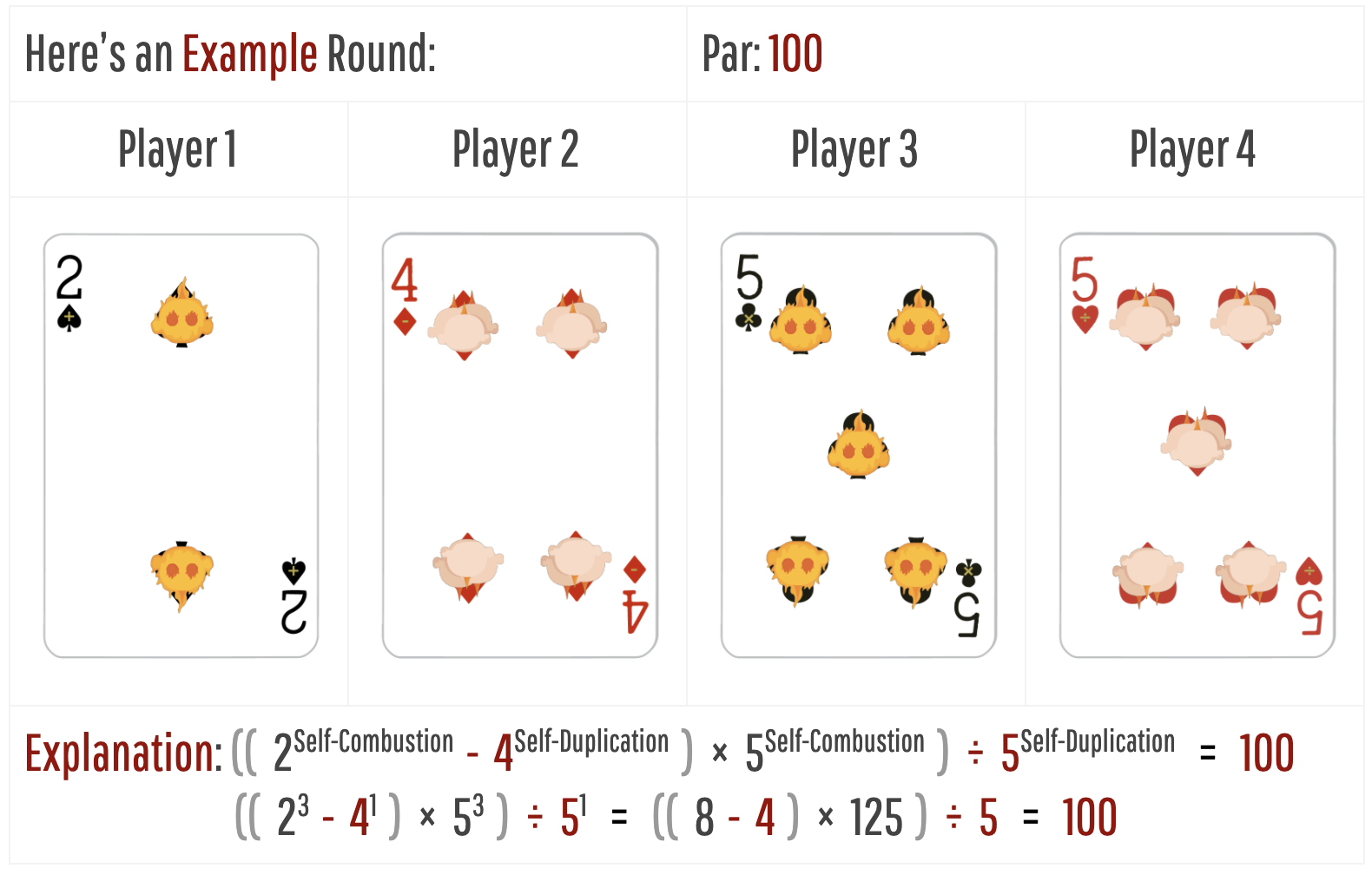
From there, you can begin plugging in known card values into each round's equations to figure out which of Bob's cards go where. The correct superpower mapping is given below:
| Powers |
|
Suits |
| Name |
Symbol |
Value |
|
Name |
Symbol |
Operation |
|
| Self-Duplication |
 |
1 |
|
Spade |

|
Add [+] * |
| Electrokinesis |
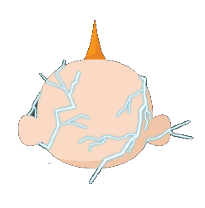 |
2 |
|
Diamond |

|
Subtract [-] |
| Self-Combustion |
 |
3 |
|
Club |

|
Multiply [×] |
| Monster Form |
 |
4 |
|
Heart |

|
Divide [÷] |
| Laser Vision |
 |
5 |
|
* Spades also denote positive numbers |
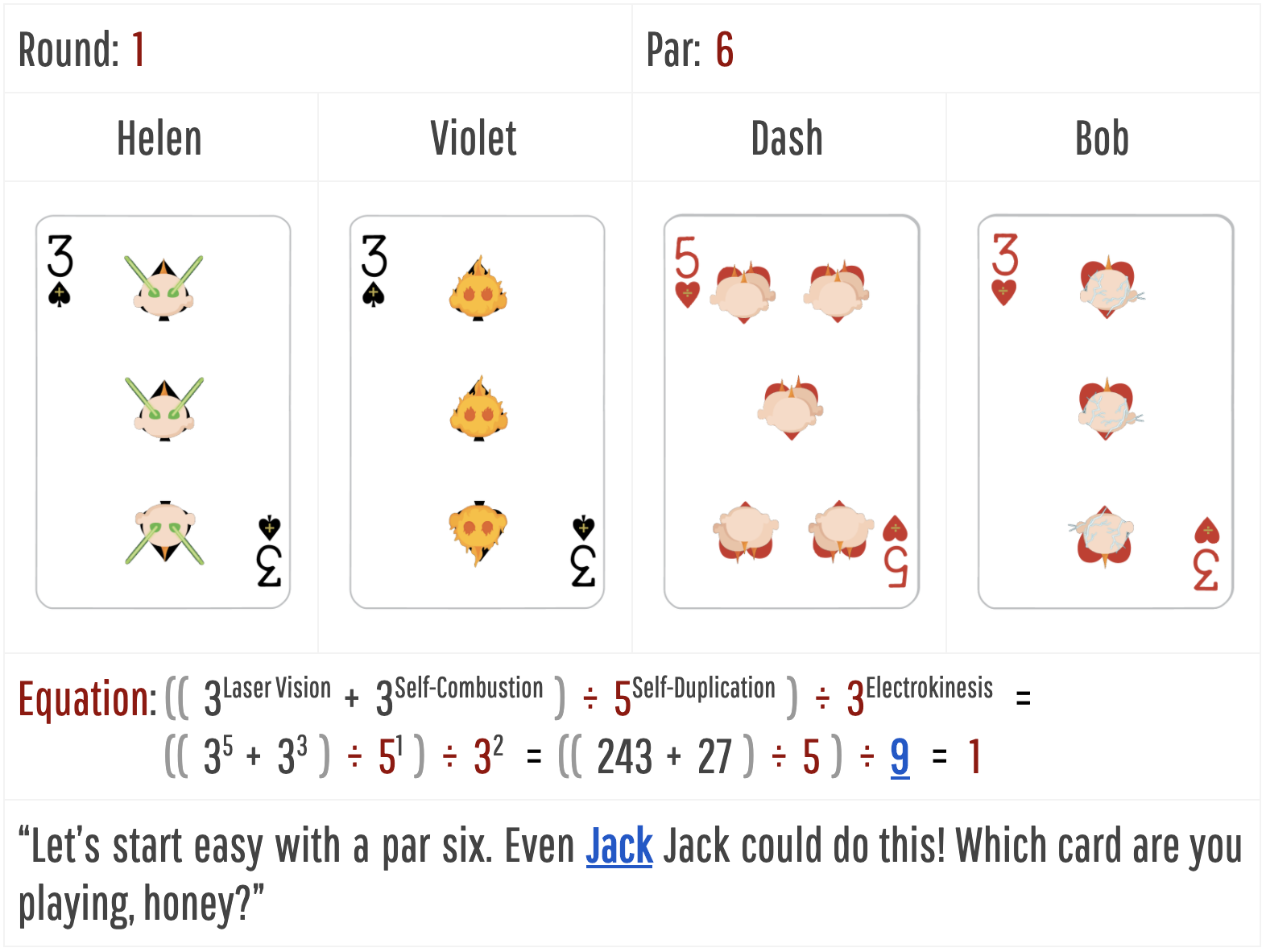
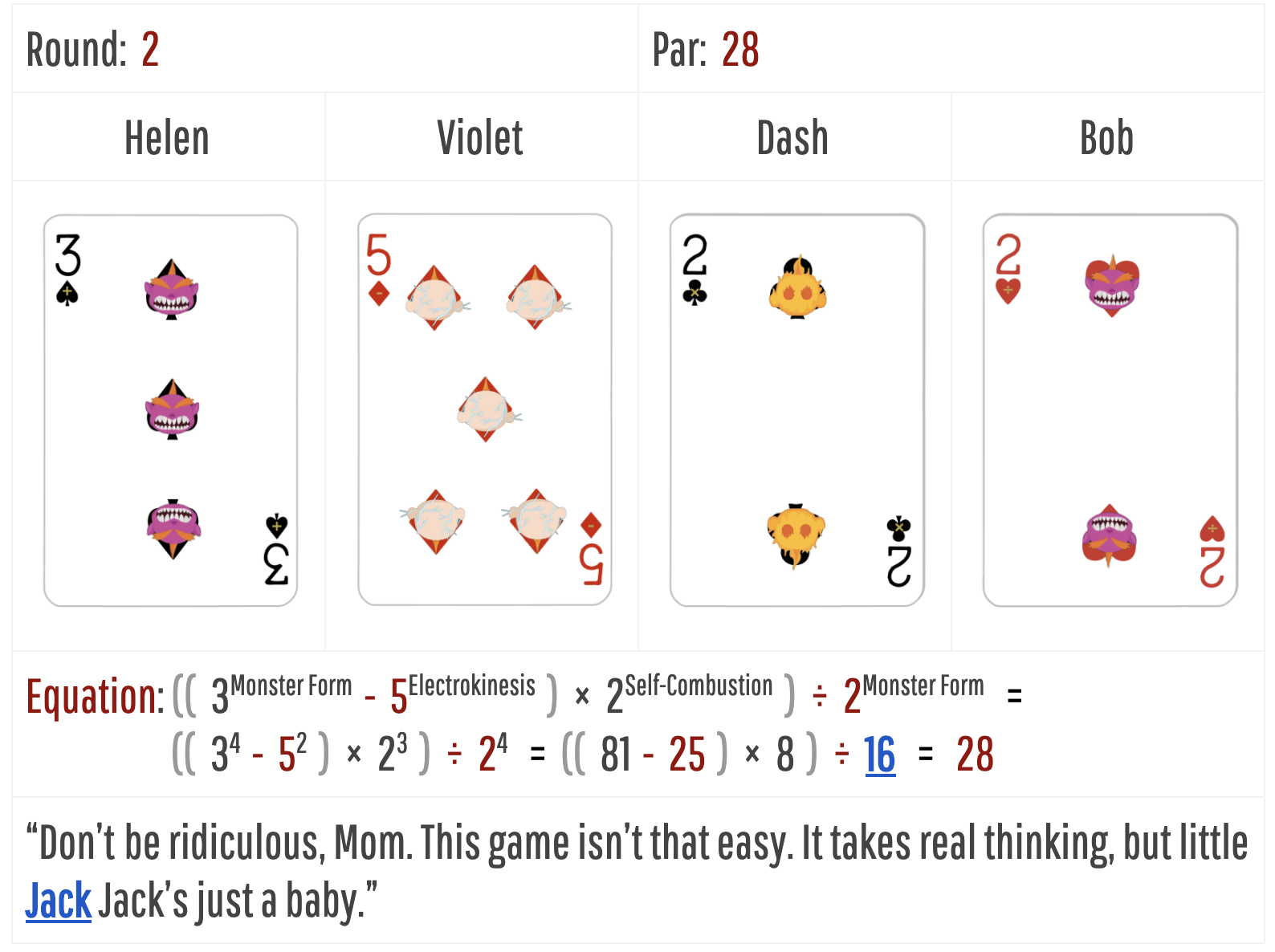
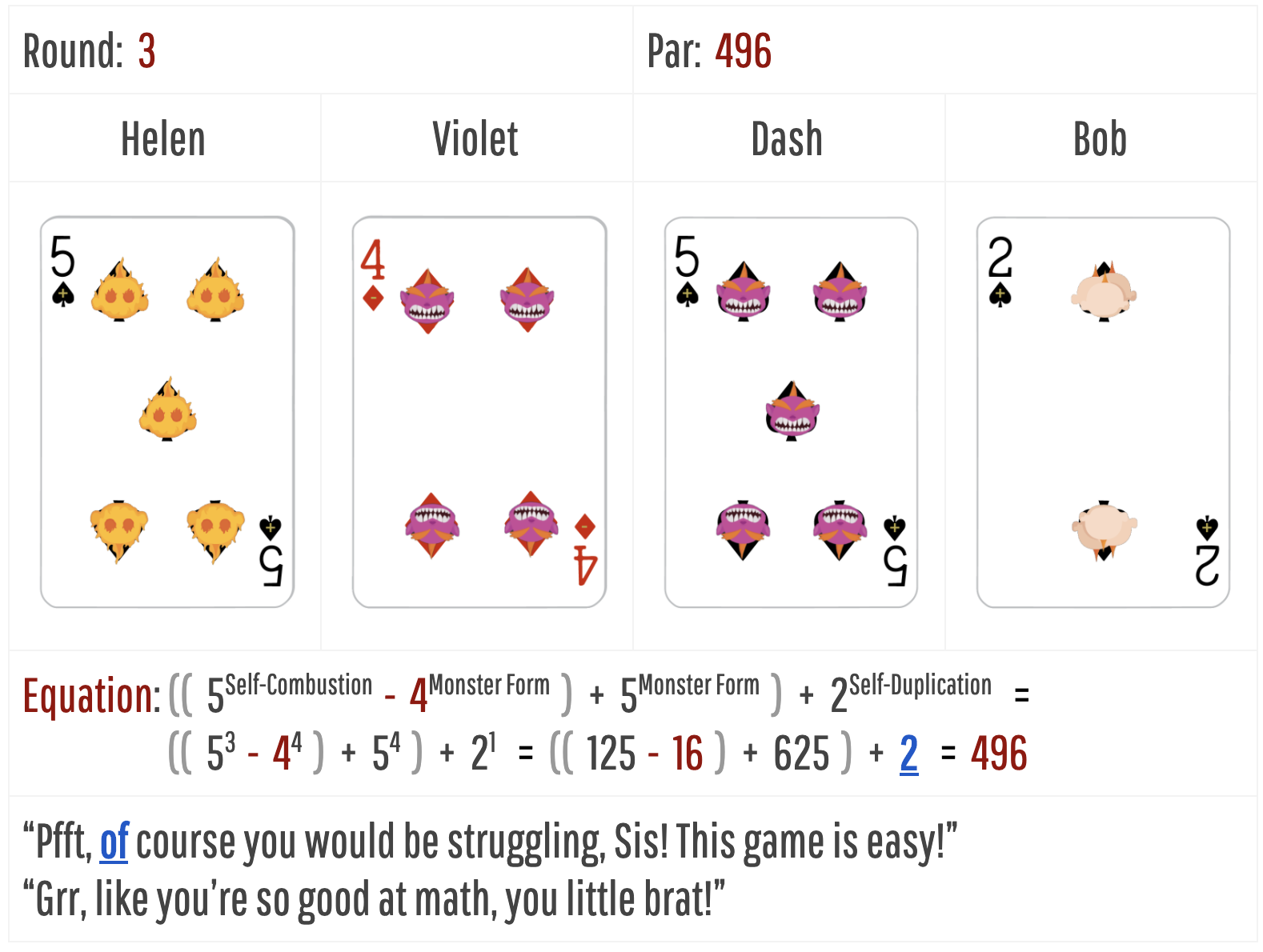
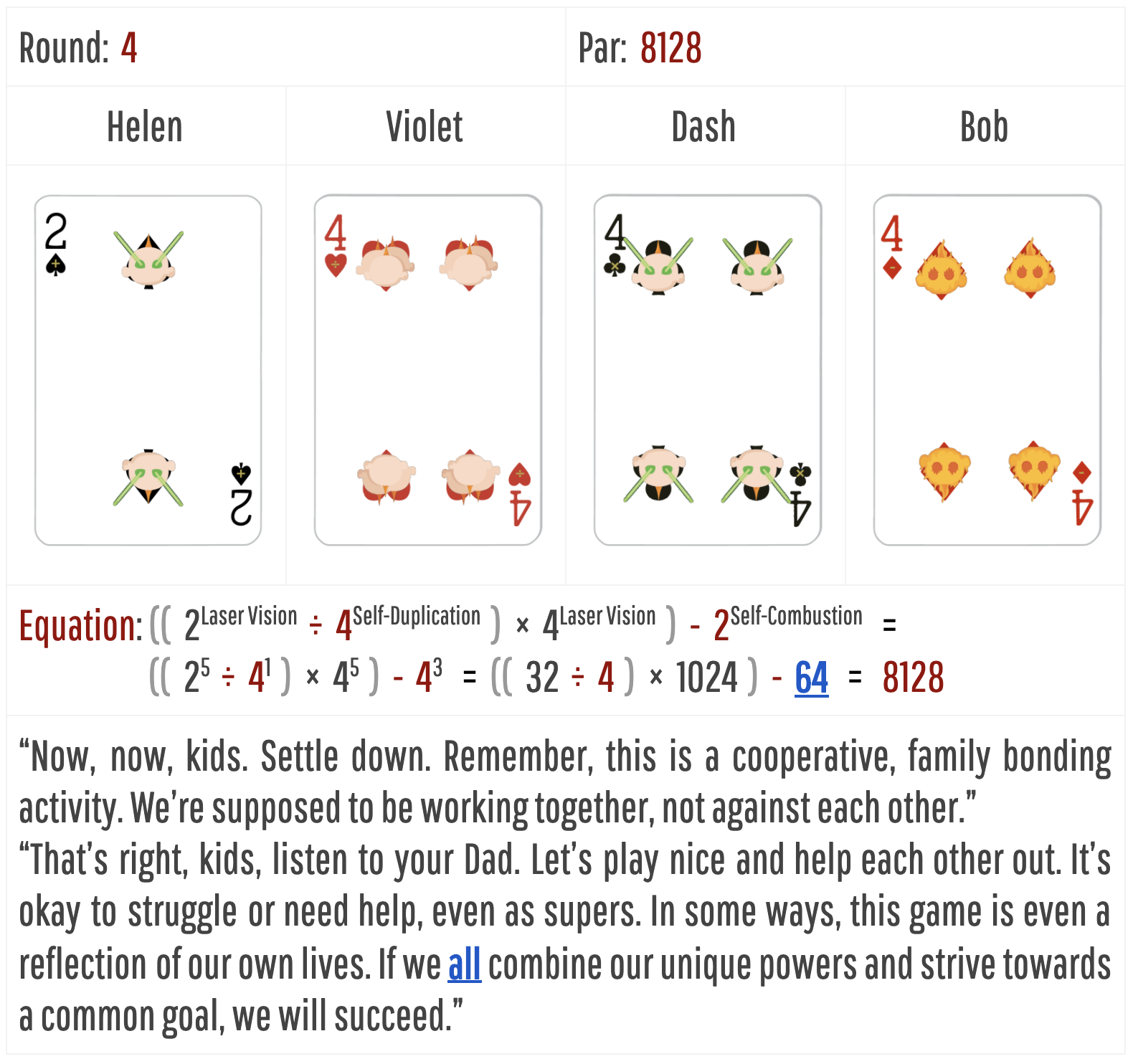

After solving all the equations, you might notice that each round comes with some dialogue. The final round's dialogue also highlights the words "index" and "words." If you take the values of Bob's card in each round and index into the dialogue, you'll get the phrase JACK JACK OF ALL SPADES, a play on the expression "jack of all trades", and the answer to this puzzle.
Authors' Notes
This was our attempt at creating a playing-card based puzzle. It was a little tricky figuring out a good way to turn dynamic, interactive, non-deterministic card games into static, deterministic puzzles. Now that most of our website work is done, we might try to see if we can design a more dynamic and interactive card-based puzzle in our next hunt.
A math and card-based The Incredibles puzzle ended up being pretty thematic. The title is a reference to a scene from The Incredibles 2, where Bob gets frustrated at how math has changed. Many classic card games are 4 player games, which aligned well the Incredibles family.
When we realized that "power" could refer to both super powers and exponential powers, it seemed like a great opportunity to incorporate Jack-Jack's powers into the puzzle as exponential powers.
Moreover, "Parr" (the family name) sounds just like "par" (golf term denoting the "goal" number), so it made sense to try to create equations that summed up to certain par values.
While looking for pretty par values, we chanced upon sequences of numbers called Super-d Numbers, which seemed perfect because we were dealing with super powers!
In the name of elegance, we wished to use every card value exactly once (every base^power combination), but we couldn't figure out how to get all the math to work with Super-2 numbers (which didn't scale fast enough for 3125 to be easy to use).
Ultimately, we were able to make this work using the first 4 perfect numbers (6, 28, 496, and 8128), along with 2 nice, round-looking numbers (100 and 50,000). Hence, we titled the game Perfect Pars.
Finally, we're pretty happy with the answer to this puzzle. When it comes to superpowers, Jack-Jack really is a "jack of all trades (is a master of none)", having a wide array of powers at his disposal, but not having the skill (yet) to control any of them effectively.














